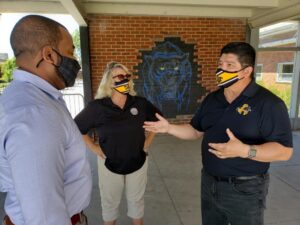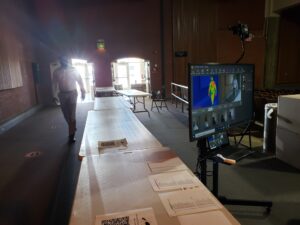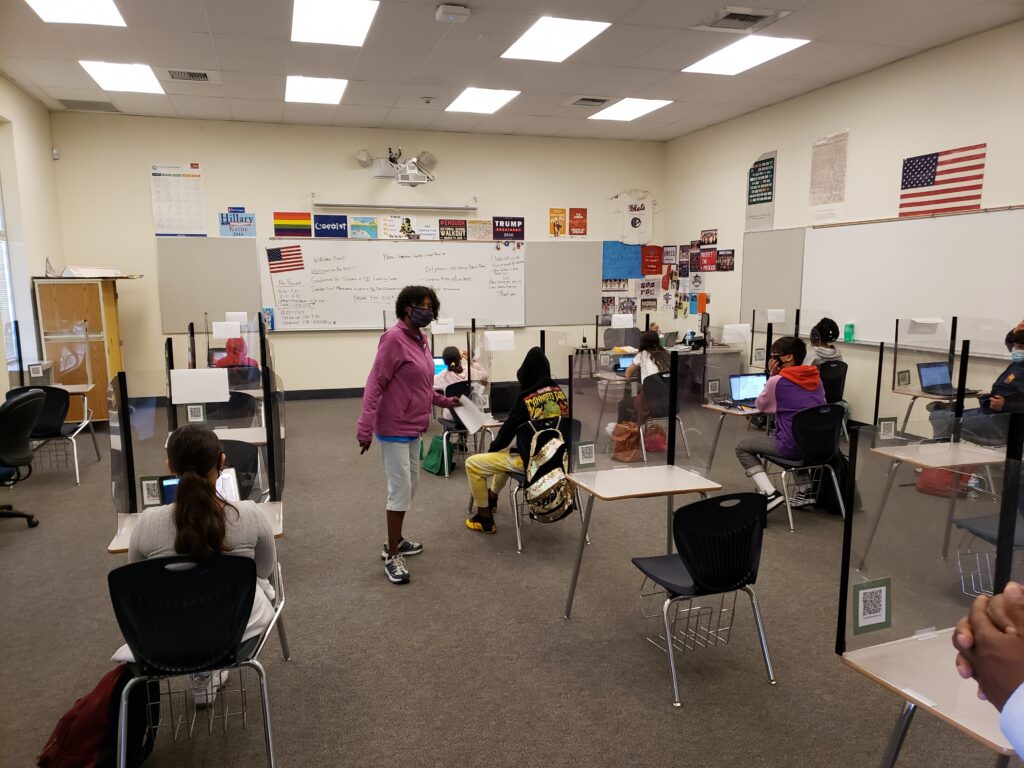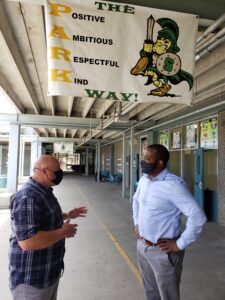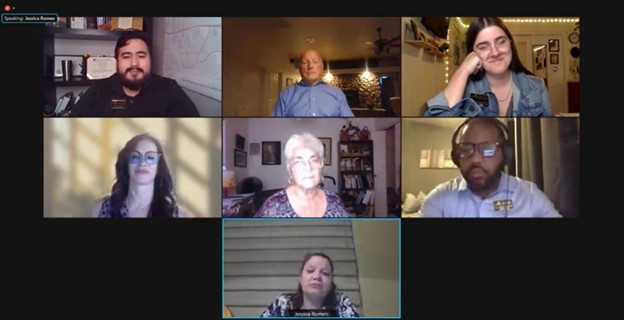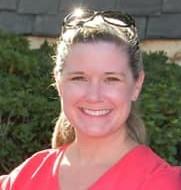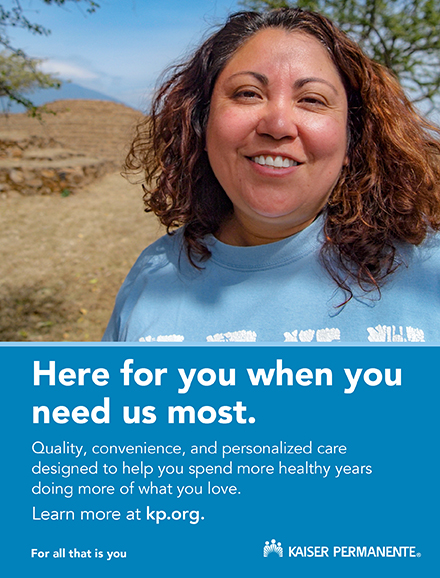Addresses other matter of Black students being told which colleges they should and shouldn’t apply to
Important issues of concern for the Black community
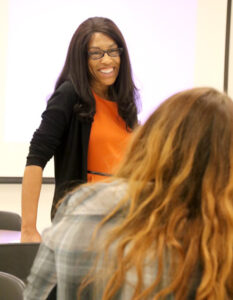
Iris Archuleta interacts with a student in her class at LMC.
By Iris Archuleta, J.D.
Following are the extended remarks of a statement I made during the Los Medanos College Academic Senate meeting on March 22, 2021. (Publisher’s note: This was received for publication in the publisher’s personal email, that day and was not seen until, today. However, the issue is ongoing and still timely).
First, I want to thank Willie Mims and NAACP President Victoria Adams for attending LMC Academic and Curriculum Committee meetings and making powerful statements about this madness.
At a time when the fight for equity and social justice should be embraced, and even as the new Contra Costa Community College District (CCCCD) Chancellor, Dr. Bryan Reece, is promoting and instituting serious strategies for equity and inclusion and is a strong advocate for anti-racist policies and behaviors throughout the district, a disturbing attack is underway by a non-Black faculty member and her so-called “Ethnic Studies Council” to take over a highly successful class I have been teaching since 2015, and have a non-Black professor, herself, teach it this fall.
I am an Adjunct Professor in Social Science at Los Medanos College. Since 2014, I have taught several courses, including American Government, Social Justice, and Issues Facing African Americans. In fact, in 2015, because of my background and experience, I was asked to teach, Issues Facing African Americans (SOCSC 045), when the professor teaching it unexpectedly did not show up for class on the first day.
I developed the curriculum and study materials and have been teaching the course every semester since then. In my classes, I have a no-cost textbook policy to save students money, and instead, my students are able to access the study materials that I have developed through research and that I provide through PowerPoints and links to free material. In addition, my students are taught to do their own research and provide presentations to the entire class to enhance student learning.
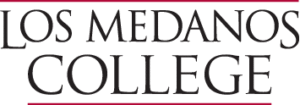 My students are empowered, and as a Black professor, I infuse in them a sense and level of pride and teach them about the resilience and power of Black people in this society. I have stayed in contact with many students over the years and helped them attain goals they never believed they could. I get a message almost every day from former students who thank me for awakening their thirst for knowledge and for the truths they learned about the struggles and successes of Black people in America.
My students are empowered, and as a Black professor, I infuse in them a sense and level of pride and teach them about the resilience and power of Black people in this society. I have stayed in contact with many students over the years and helped them attain goals they never believed they could. I get a message almost every day from former students who thank me for awakening their thirst for knowledge and for the truths they learned about the struggles and successes of Black people in America.
I also make it a point to bring in guest speakers with expertise and experiences in a range of struggles and concerns facing African Americans. For example, my husband, Keith Archuleta, who is Black and Chicano, is a community leader in his own right, with several degrees, including African and African American studies with honors from Stanford University, is a guest lecturer on several subjects during each semester.
Not only that, but my husband and I have encouraged Black students to apply for their colleges of choice and not to shy away even from schools such as Stanford. In our class, Keith is able to share with them that as a student at Stanford, not only was he “accepted,” but he started the Black Media Institute and the Black Community Services Center. He and thousands of other Black students over the years have made Stanford a better place.
We are attempting to counteract what many Black students are being told, by this professor and others who are attacking me, that Stanford is a “white” school where they would not be accepted, so don’t even try to apply.
I recently sent out a link to faculty celebrating the graduation of over 60 Black Harvard Law School students this year, and I did not even get a comment from this professor to indicate anything had changed about her low expectations of Black students going to some of the best universities in the country.
I have received excellent performance reviews in all the courses I teach, and have earned preference, a designation meaning first choice when scheduling classes among adjuncts.
I work continually to improve my teaching methods and bring in new research, data, and issues to keep the course fresh, relevant, contextual, and interdisciplinary.
So, last year, when the new full-time professor in Social Justice, who is not a Black professor, asked to meet with me to discuss updating the curriculum for the Issues Facing African Americans course, I was happy to meet with her. We worked together to do a few updates, with the bulk of the curriculum that I created over time remaining intact.
She said she wanted to change the name of the course to Introduction to Black Studies. I saw no problem with that. However, she failed to mention at the time that not only did she plan to change the name, but that she was planning to take over teaching the course and discontinue my teaching of the course.
So, until fairly recently, I believed that in the fall semester I would be teaching the same course I am teaching this semester, Issues Facing African Americans, just updated and retitled Introduction to Black Studies, with the curriculum that I created.
However, just a few weeks ago, that professor approached me and asked if I would teach an additional class, Race and Ethnicity (SOCSC 150). Since I and other Black faculty and others had written the curriculum for Race and Ethnicity, that made sense. So, then I thought if I accepted the Race and Ethnicity class, that in the fall I would be teaching that course and Introduction to Black Studies.
However, later she informed me that she would be teaching Intro to Black Studies because the course now requires someone with a degree in Ethnic Studies to teach it. She feels she is more qualified because of her full-time status and her Doctorate in Chicana Studies. She is not, nor does she claim to be African American or Black.
It is ironic that in the name of Ethnic Studies, a class taught by a Black woman would be eliminated and the same course, now under a different title, would be set up to be taught by someone who is not Black.
When I think of racism it reminds me of our history of dealing with people who feel they are superior to others and have the inherent right to take from those they designate as inferior, which in this case happens to be me.
This is not acceptable. It is not acceptable to me; it is not acceptable to Black students; and in fact, it is not acceptable to any students of all backgrounds who have taken this course or plan to take it in the future. It should not be acceptable to the college.
Furthermore, her claim that only someone with a degree in Ethnic Studies is qualified to teach Intro to Black Studies makes no sense and in fact makes a mockery of the CCCCD Anti-Racism Pledge, which says, in part:
“Resolved, that the Academic Senates of the CCCCD encourage all CCCCD employees to commit to professional development, hiring practices, and/or curricular changes that work to dismantle structural racism.”
By excluding a Black professor from teaching a course she has been qualified to teach for over five years and allowing a non-Black professor to take over a course called Intro to Black Studies, would actually be strengthening structural racism.
Black in the context of Black Studies is a socio-political term defined as: “the collective struggle/experience of people of African descent to gain power and influence in the processes and institutions of government as a way of securing and protecting a diverse array of issues as American citizens.” Black Studies is typically associated with politics and law in the fight against racism.
Just as my background, training, and life experiences have more than qualified me to teach Issues Facing African Americans, my Political Science degree with honors and my Juris Doctorate (Law) degree with honors more than qualify me to teach Intro to Black Studies.
It has been courageous Black leaders such as Charles Houston, Thurgood Marshall, and other world-changing Black lawyers, such as Bryan Stevenson – the attorney responsible for getting more than 100 wrongly convicted African American and other prisoners off death row – that continue to inspire my life’s work and drove me to earn a degree in Political Science and an advanced degree in Law in the first place.
To rub salt into the wound, as this affront has been allowed to continue, this professor and her committee have doubled down on personal attacks and insults toward me and others at the college who support my position; and are now adding more false justifications for taking the course from me.
One of the things that they are promoting is what they refer to as “engagement in the African American community” as a prerequisite along with an Ethnic Studies degree for teaching Intro to Black Studies, implying that this is another requirement that would bar me from teaching this course.
Not many others at LMC have had anywhere near my experience in Black community engagement. First of all, my very life is rooted in the Black community and the solid relationships I have built in Eastern Contra Costa County and the Bay Area. I’ve really been blessed to grow up in San Francisco where I lived in a home that welcomed SNCC organizers and Black Panthers.
My husband and I are the founders of Emerald HPC International, LLC, a consulting company active, locally and globally, in community and economic development consulting, specializing in the design and implementation of systems change strategies and outcomes-based collaborative efforts through our trademarked, High Performing Communities Framework (HPC).
We invested our own funds and organized the Youth Intervention Network that served Antioch youth and families, with a 92% reduction in police calls for service, an 83% reduction in truancy, and an improvement in student GPA by an average of two grade points. Ninety-six percent of the students participating in YIN graduated from high school. Of these, 99% went on to postsecondary education. YIN was featured as one of three global best practices and a model urban anti-violence and peace building initiative at the 2012 opening celebration of the United Nations Peace University at The Hague and recognized by Attorney General Eric Holder during the Barack Obama administration with the U.S. Justice Department’s National Best Community Involvement Award.
We have also worked with Hispanic leaders on important projects such as Brentwood’s One Day at a Time (ODAT) and sponsored youth, including LMC students, to attend the international Corrymeela Peace and Reconciliation Center in Northern Ireland, to study racial and ethnic struggles worldwide.
We are currently working with Dr. Clay Carson, the Director of the Martin Luther King, Jr. Research & Education Institute, who has been entrusted with the original writings, letters and speeches of Martin and Coretta King, to continue the study of the unfinished work of the Civil Rights Movement and the on-going racist backlash to the anti-racist movement and the successes of the Black struggle for freedom.
We brought Rev. Jesse Jackson to Antioch for a talk with officials and citizens about social and economic justice. We have worked with Keith’s fellow Stanford BSU leader, Steve Phillips to launch PowerPac and Vote Hope that supported Barack Obama’s 2008 Presidential campaign, and we brought California and Bay Area Black clergy to Antioch to organize their support for that campaign and Black voter registration.
We don’t have space enough here to talk about most of our work locally and the myriad of local leaders, artists, and activists who are engaged in making life better not only for Black residents and young people, but all people here in Eastern Contra Costa County, especially those most impacted by racism and inequity. Students in my classes have access to these and other local, national, and international Black community leaders, who have been and still are on the frontline of the struggles facing Black people.
Before I close, let me show you how absurd this situation is by giving you the following scenario:
What if I, a Black woman, had majored in Ethnic Studies, and was recently hired at a community college as the new full-time professor to head up the Ethnic Studies department, that has no other full-time professors. I find out that a Chicana has been teaching a course in that department called Issues Facing Mexican Americans for five years as a part-time adjunct professor.
What if I, with all of my power as a full-time professor who is the nominal head of the department, then decided to change the name of the course to Intro to Latinx Studies, and because I have an Ethnic Studies degree, I am now automatically more qualified than a professor who is Chicana and has both a J.D. and a Political Science degree? What if I made this unilateral decision with no accountability either to that college or that community?
Still, I need to make sure you know this:
Even if I do not teach this class, it is important that someone else be hired who has the appropriate qualifications to teach Intro to Black Studies. It is my hope that LMC will recognize other brilliant brothers and sisters, especially the younger ones, with doctorates in African American studies and who are Black. If I am not to teach this class, I want LMC to respectfully hold off on posting this course until someone qualified is hired.
Finally, I appreciate all those who are willing to speak up, speak out, and distribute this information. I also appreciate all those who are making sure this information gets out to the community, including Laurie Huffman, my colleague and ally, who has also spoken out against this issue.
Please feel free to voice your concerns to:
- Nikki Moultrie, LMC Dean of Career Education & Social Sciences: NMoultrie@losmedanos.edu
- James Noel, Chair of LMC Academic Senate: JNoel@losmedanos.edu
Academic Senate meeting dates: https://www.losmedanos.edu/intra-out/as/
- Name, Chair Curriculum Committee: mlynn@losmedanos.edu
Curriculum Committee meeting dates: https://www.losmedanos.edu/intra-out/cur/meetings.aspx
Thank you all for your support and your time and attention.
Iris Archuleta is Vice President of Community Engagement for Emerald HPC International, LLC and Adjunct Professor in Social Science at LMC.
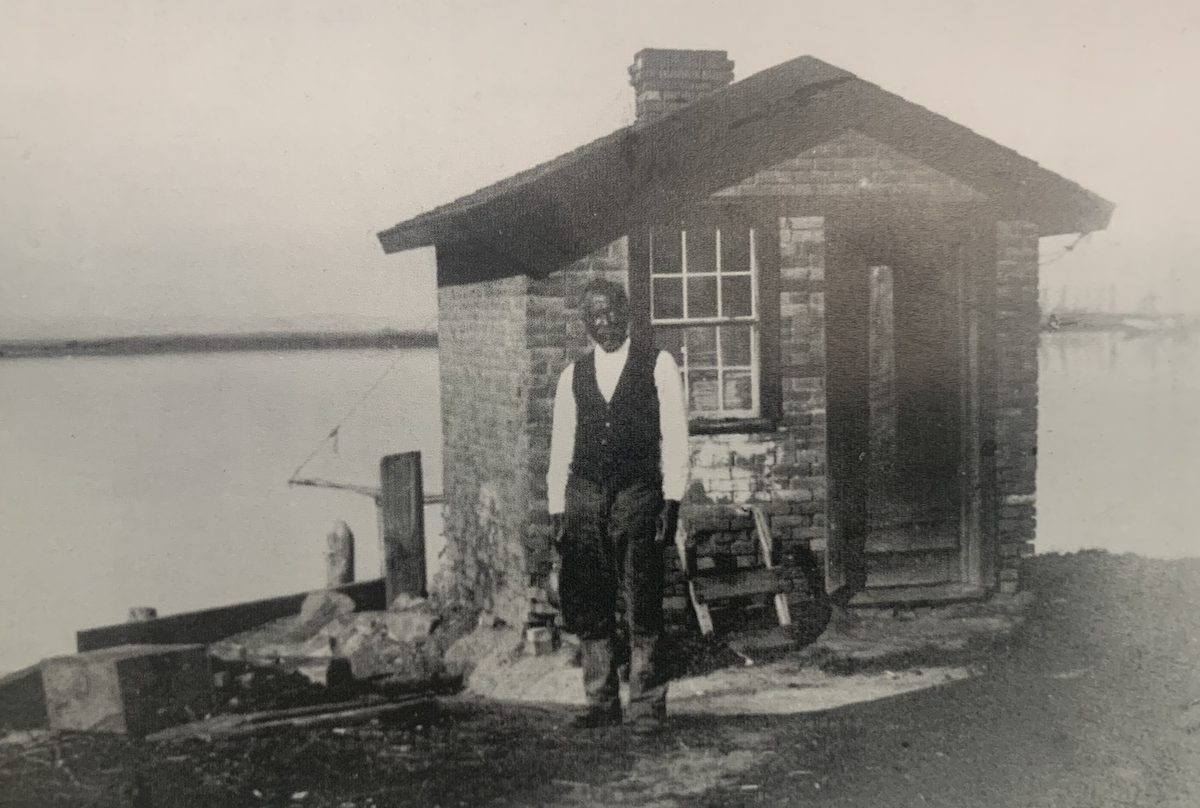
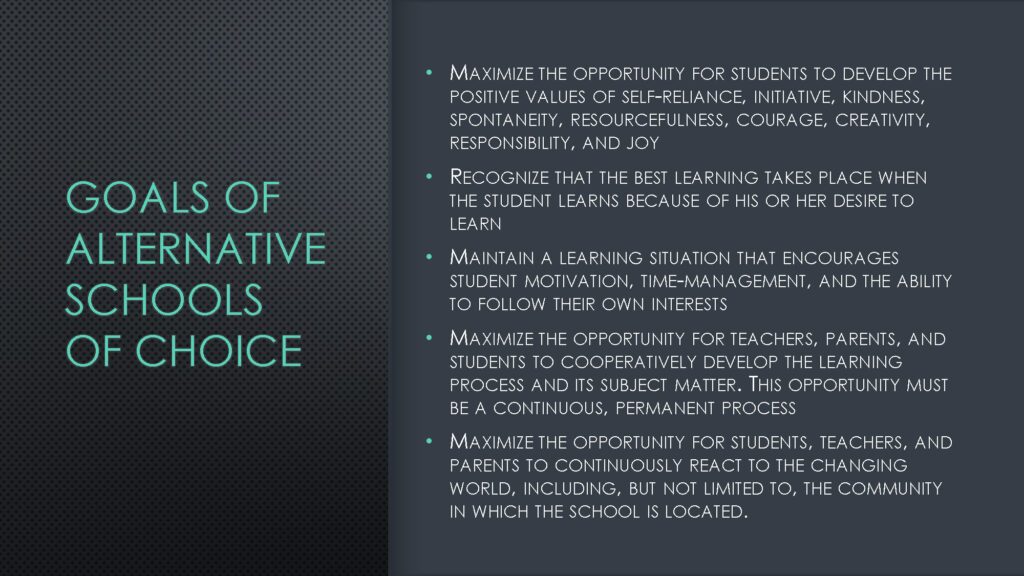












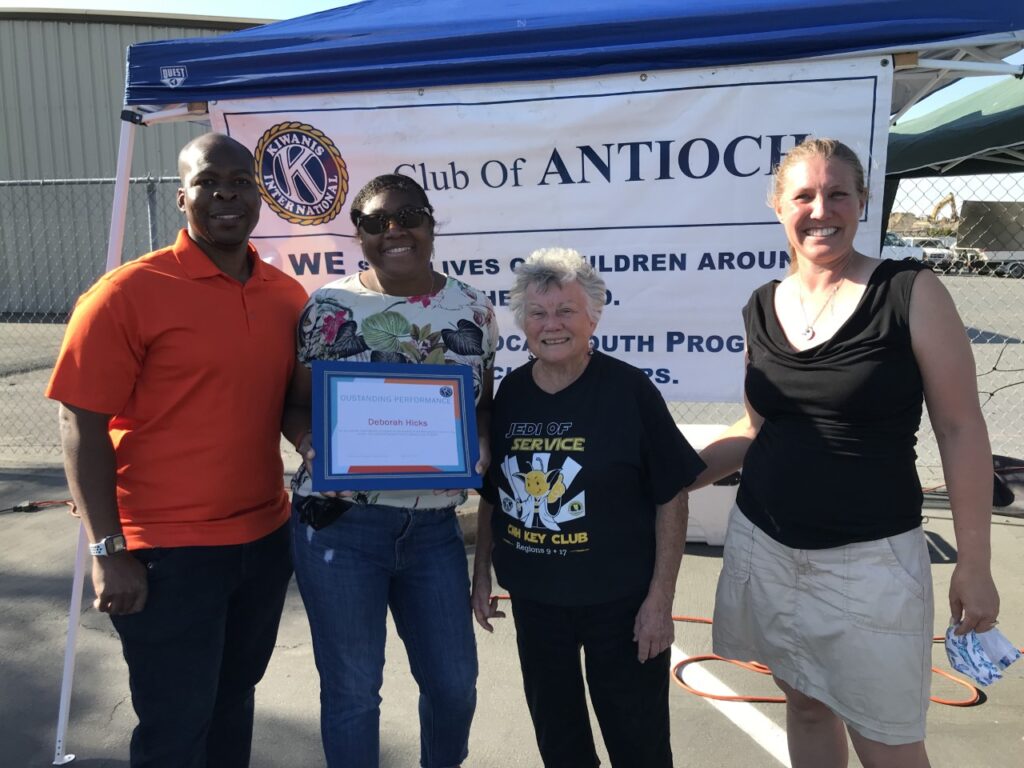
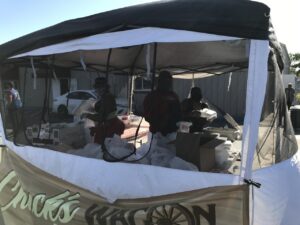
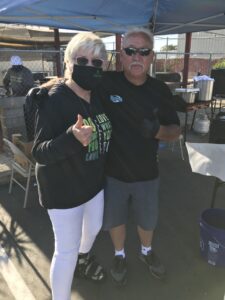

 My students are empowered, and as a Black professor, I infuse in them a sense and level of pride and teach them about the resilience and power of Black people in this society. I have stayed in contact with many students over the years and helped them attain goals they never believed they could. I get a message almost every day from former students who thank me for awakening their thirst for knowledge and for the truths they learned about the struggles and successes of Black people in America.
My students are empowered, and as a Black professor, I infuse in them a sense and level of pride and teach them about the resilience and power of Black people in this society. I have stayed in contact with many students over the years and helped them attain goals they never believed they could. I get a message almost every day from former students who thank me for awakening their thirst for knowledge and for the truths they learned about the struggles and successes of Black people in America.
